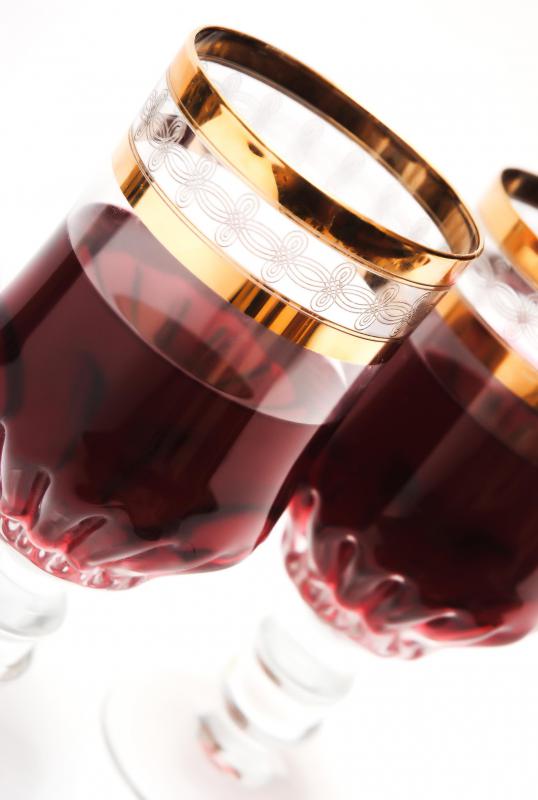At WiseGEEK, we're committed to delivering accurate, trustworthy information. Our expert-authored content is rigorously fact-checked and sourced from credible authorities. Discover how we uphold the highest standards in providing you with reliable knowledge.
What is Sangiovese?
The two great grapes of Italy are nearly always agreed upon as Barbera and Sangiovese. The latter of these, Sangiovese, is the chief grape used in producing Chiantis. The grape produces light-bodied red wines that easily pair with most food and has been in wide use in the Chianti region of Italy for many centuries.
The name Sangiovese comes from the phrase sanguis Jovis, literally "blood of Jove." It may sometimes be translated as "the blood of God," as Jove was a Roman name for the god Jupiter. More often, however, the name is thought to refer to St. Jove. Sangiovese is a widely cloned grape variety, with some of the more popular clones having considerable notoriety on their own strength. These include the grapes Brunello and Uva Canina.

The standards of the D.O.C.G, the wine governing body of Italy, allow for up to 20% of other grapes to be used in Chianti, requiring that only 80% of the grapes used be Sangiovese. This has led to a wide range of experimentation amongst wine makers, including the addition of Cabernet Sauvignon to the Sangiovese, creating the exceptional wines known as “super Tuscans.” In California, Sangiovese is growing in popularity as a single-grape varietal, with a number of vineyards producing very well-received wines from the grape. Australia, too, is seeing an emergence of Sangiovese-based wines, including a number of pink wines made using the Sangiovese grape.

The grape itself ripens very late and is somewhat finicky, and wines made from Sangiovese tend to be rather pale when compared with darker grapes such as Cabernet Sauvignon. Sangiovese wines have a noticeable acidity that may feel harsh to many people at first. In its Italian incarnations, it may also exhibit a fair amount of bitterness. The words used to describe Sangiovese wines often hint at the rustic nature of the flavor, with terms like vegetation, musk, and farmy cropping up.

Sangiovese colors quickly, moving through the spectrum within a few years to arrive at a light ruby wine with subtle shadings of orange. In general, Sangiovese should be drunk fairly young – within five years. Some top-end wines, however, such as those labeled Chianti Classico Riserva or the special selections of California wineries, may age well for decades before arriving at their peak.
AS FEATURED ON:
AS FEATURED ON:















Discuss this Article
Post your comments